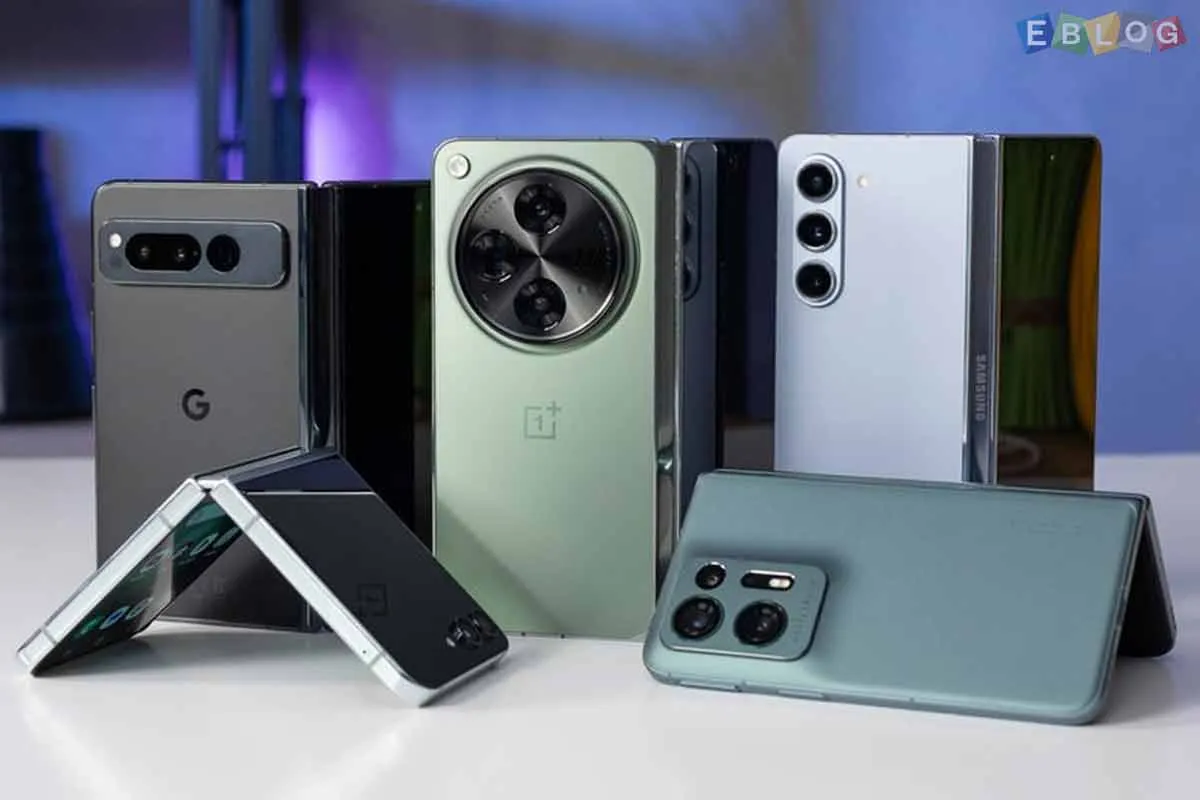
New Gadgets in 2025: What's Hot and What's Not?
- 13 Mar, 2025
- Tech
- 526 Views
- 0 Comments
As technology continues to evolve at lightning speed, every year brings a fresh wave of innovative gadgets that promise to change how we live, work, and play. The year 2025 is no exception, with new gadgets that push the boundaries of what we once thought possible. From AI-powered devices to sustainable tech, the gadgets in 2025 are as diverse as they are groundbreaking. But as exciting as these advancements are, not every gadget is destined for success. Some are hot, while others might fall flat. Let’s dive into the gadgets that are making waves in 2025 and see what's truly worth the hype.
1. What's Hot in 2025: The Gadgets Leading the Way
a. AI-Powered Personal Assistants: Artificial Intelligence continues to transform the way we interact with technology, and in 2025, we’re seeing AI-powered personal assistants that are more intuitive than ever before. These devices not only respond to voice commands but can predict your needs, learn from your preferences, and adapt to your lifestyle. Whether it’s handling work tasks, offering health advice, or controlling your smart home devices, these next-gen assistants are set to become integral to daily life.
Why It’s Hot: AI’s capability to understand context and emotions has reached a new level, making these assistants incredibly efficient and human-like. Expect seamless integration with other devices and an experience that feels less like interacting with a machine and more like interacting with a personal advisor.
b. Foldable and Rollable Screens The foldable and rollable screen trend continues to evolve in 2025, with companies offering even more durable and flexible designs. These devices include smartphones, laptops, and even TVs that can be folded or rolled up for portability or expanded for larger screens. They are expected to dominate the consumer market by offering more screen real estate while remaining ultra-portable.
Why It’s Hot: With the rise of remote work and mobile entertainment, having a versatile, portable device with a larger display is incredibly appealing. These foldable and rollable gadgets are perfect for those who want cutting-edge tech that’s both functional and stylish.
c. AR Glasses for Everyday Use Augmented Reality (AR) is no longer confined to gaming or niche industries. In 2025, AR glasses have evolved into sleek, wearable devices that enhance everything from social media interactions to real-time navigation. These glasses overlay digital information onto the real world, making tasks like reading emails, watching video calls, or checking directions incredibly convenient and hands-free.
Why It’s Hot: AR glasses offer a hands-free way to stay connected and interact with the world around you. They have the potential to change how we engage with information and entertainment, making them a must-have gadget for tech enthusiasts.
d. Smart Health Gadgets In 2025, health and fitness gadgets are becoming more personalized, offering real-time health monitoring and even early detection of medical issues. From advanced wearables that track everything from sleep to glucose levels to implantable devices that monitor vital organs, the focus is on preventative care. These gadgets are designed to give users more control over their health and wellness.
Why It’s Hot: The demand for personalized healthcare continues to rise, and these gadgets empower people to take charge of their health. Whether you're looking to optimize your workout or monitor chronic conditions, these devices bring valuable insights straight to your wrist or even under your skin.
e. Quantum Computing for Consumers: While still in its early stages, quantum computing is beginning to make its way into consumer technology in 2025. Think of it as the next frontier of computing power. Although still a niche market, quantum computers are showing promise in fields like data encryption, research, and even personalized AI. Some companies are experimenting with offering entry-level quantum computing devices for businesses and tech enthusiasts looking to experiment with this next-generation technology.
Why It’s Hot: Quantum computing promises to solve complex problems much faster than traditional computers, opening doors to breakthroughs in science, medicine, and security. Even though it’s not mainstream just yet, the potential is too exciting to ignore.
2. What's Not: Gadgets That Might Miss the Mark
a. Overhyped Virtual Reality (VR) Headsets While VR headsets have been around for a few years, the technology is still in a somewhat niche market. In 2025, VR devices are getting more immersive, but the experience is still somewhat hindered by limitations like motion sickness, bulky designs, and the need for specialized spaces to use them. VR may have its place in gaming and certain professional applications, but it’s unlikely to be a ubiquitous, everyday device for most people.
Why It's Not: Despite improvements in the tech, VR has yet to find widespread, everyday use. Until the technology becomes more comfortable, accessible, and versatile, it may struggle to go beyond its current gaming and professional use cases.
b. Self-Cleaning Devices Self-cleaning gadgets—like self-cleaning vacuums or toilets—sound great in theory, but they often don’t live up to the hype. In 2025, there’s an expectation that these devices will make life easier, but the reality is that they still require a lot of maintenance and regular cleaning. The technology is improving, but it’s far from perfect.
Why It's Not: While self-cleaning devices are convenient, they don’t always perform as promised, requiring frequent troubleshooting and maintenance. For now, they might still be more of a novelty than a game-changer.
c. Smart Furniture In 2025: The market for smart furniture is booming, with options that include beds that adjust their firmness, chairs with built-in charging stations, and desks that can automatically adjust their height. While the concept sounds futuristic, many of these products are still too expensive and not entirely practical for the average consumer.
Why It's Not: Smart furniture may offer convenience, but it’s often overpriced and doesn’t add enough value to justify the cost. Many of these products are still more about novelty than genuine utility, and they may not make it past the experimental phase for the average consumer.
d. Holographic Displays Holographic displays have long been a futuristic fantasy, and in 2025, there are some companies claiming to bring this technology to the consumer market. However, the reality is that holograms are still too expensive, impractical, and limited in their applications. The tech is promising, but it's not quite ready for prime time yet.
Why It's Not: While holographic displays might be a cool concept for entertainment or specific industries like medicine, they’re not going to be a common household item just yet. The technology still has a long way to go before it’s accessible and practical for everyday use.
3. Conclusion: Embrace the Future, but Stay Smart
The year 2025 is brimming with technological innovation, and the gadgets on the horizon promise to make our lives more connected, efficient, and exciting. However, as with any new technology, not every gadget will live up to expectations. Whether you're an early adopter or a tech enthusiast, it's important to evaluate new devices based on their practicality, longevity, and real-world impact.
So, while foldable screens, AI-powered assistants, and smart health gadgets are certainly "hot" in 2025, it’s best to keep an eye on the evolving market to ensure you're investing in gadgets that will truly enhance your life—and not just in the short term.















Leave a Reply